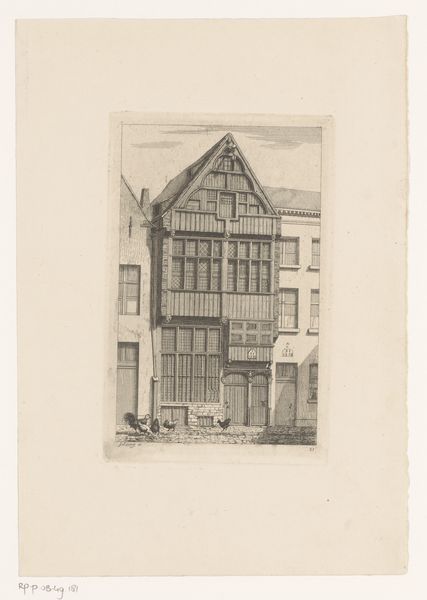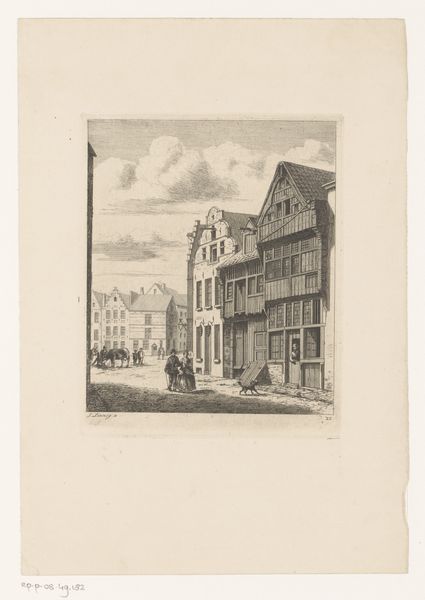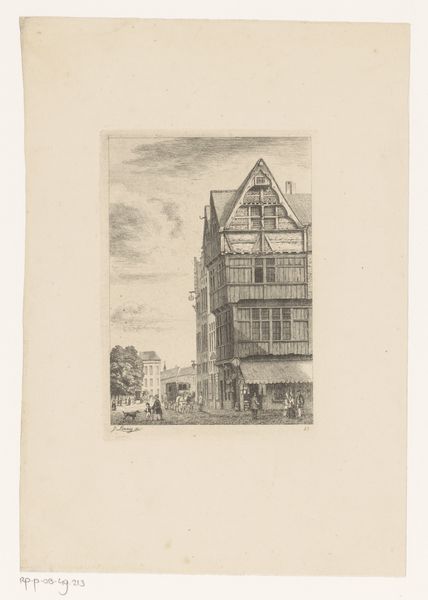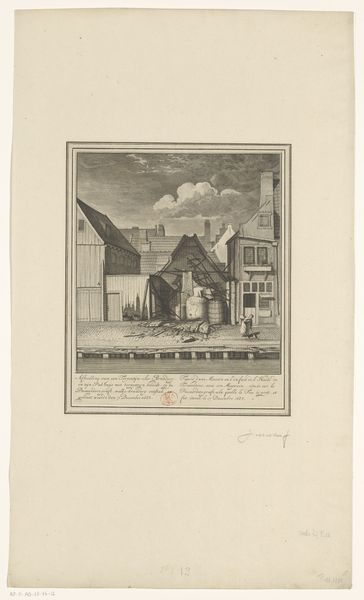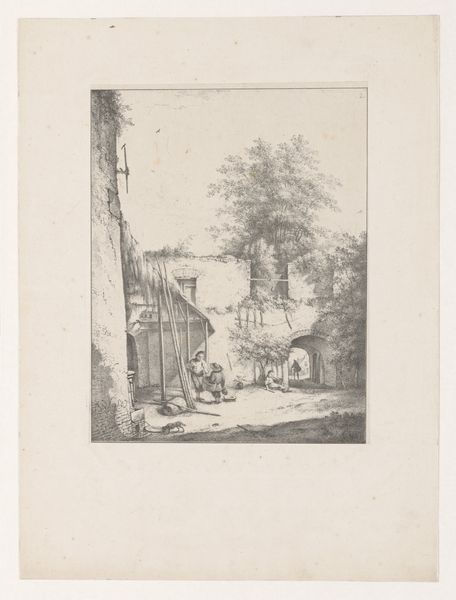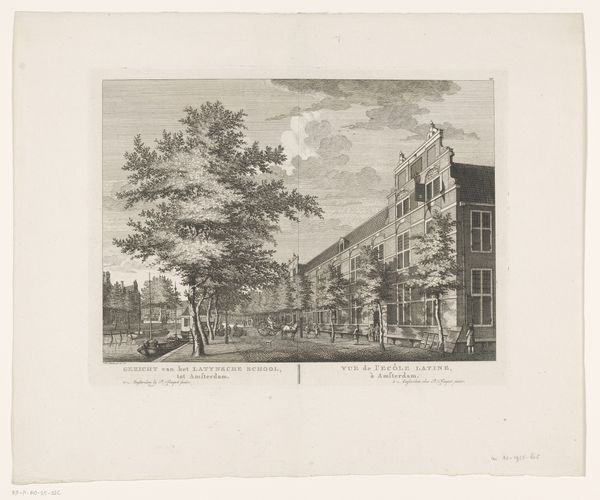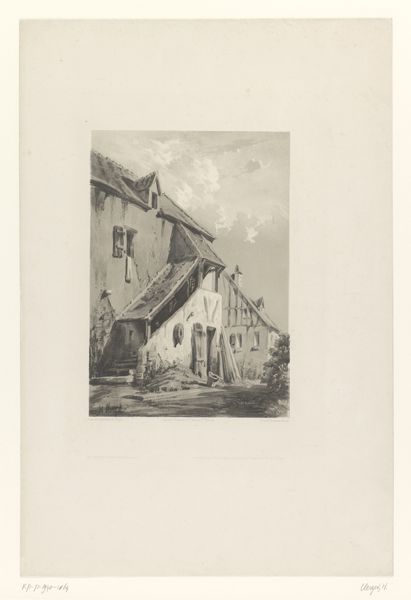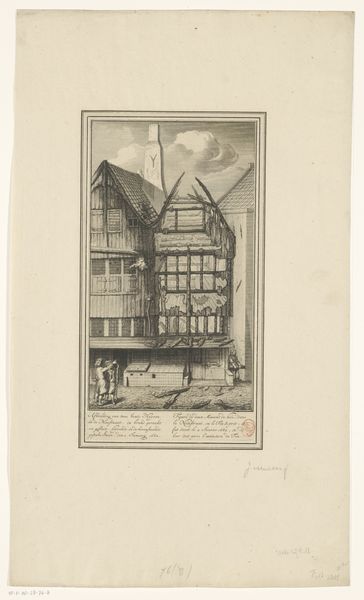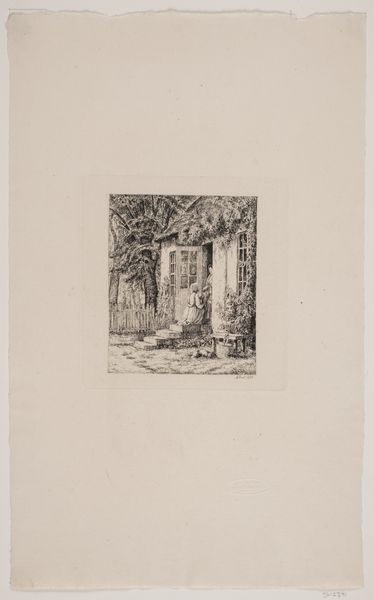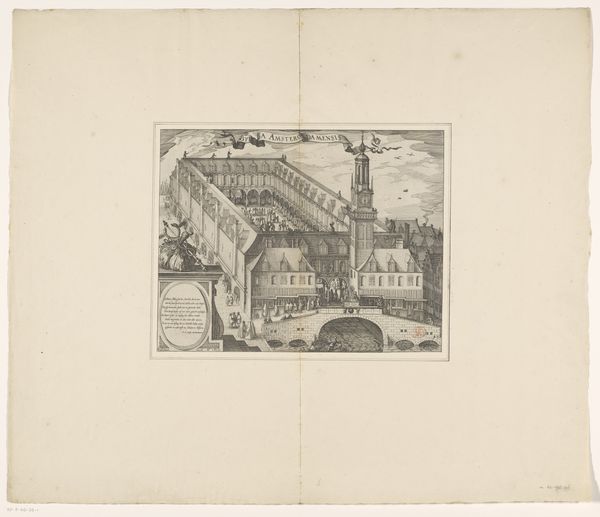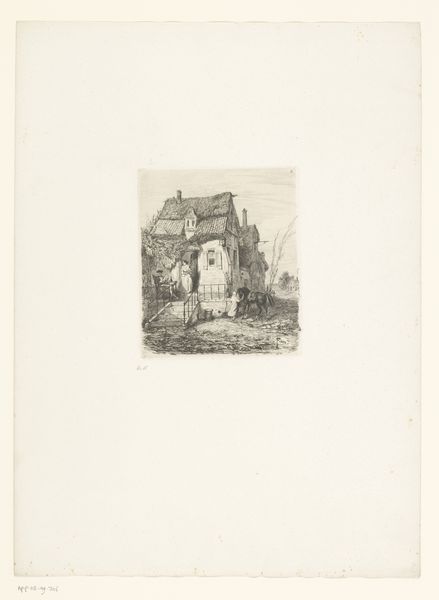
etching
#
16_19th-century
#
etching
#
landscape
#
etching
#
cityscape
#
street
#
realism
Dimensions: height 189 mm, width 128 mm
Copyright: Rijks Museum: Open Domain
Editor: Here we have Jean Théodore Joseph Linnig's "View of Stoelstraat in Antwerp," an etching from 1868. It’s incredibly detailed. The buildings loom so large, and the figures seem small in comparison. What captures your attention most in this work? Curator: I’m struck by how Linnig presents Antwerp, not as a unified, grand city, but through this narrow street, focusing on the everyday life unfolding within its aged architecture. Notice the framing, almost theatrical, drawing our eye to the street performers and merchants. It's as much a social commentary as it is an architectural study. Why do you think Linnig chose etching as his medium? Editor: I suppose the detailed lines offer precision and convey a sense of historical documentation. Was there a demand for such cityscapes at the time? Curator: Absolutely. The rise of the middle class created a market for these images, which captured a romanticized, yet realistic view of urban life. Think of the socio-political context – Antwerp was undergoing massive transformations. Artists like Linnig offered a tangible connection to a rapidly disappearing past. What does this work tell us about the relationship between art and societal change? Editor: It shows that art doesn't always have to depict grand events, but can also document and preserve the beauty of everyday existence. Curator: Precisely. The Stoelstraat etching offers a fascinating glimpse into 19th-century Antwerp, reflecting broader cultural and economic shifts. Thank you, this image offers insights on the relationship between the everyday and cultural heritage. Editor: Thank you! I learned to observe through a historical lens. I realize that I should consider how broader socio-political issues shape our perceptions of the art.
Comments
No comments
Be the first to comment and join the conversation on the ultimate creative platform.
